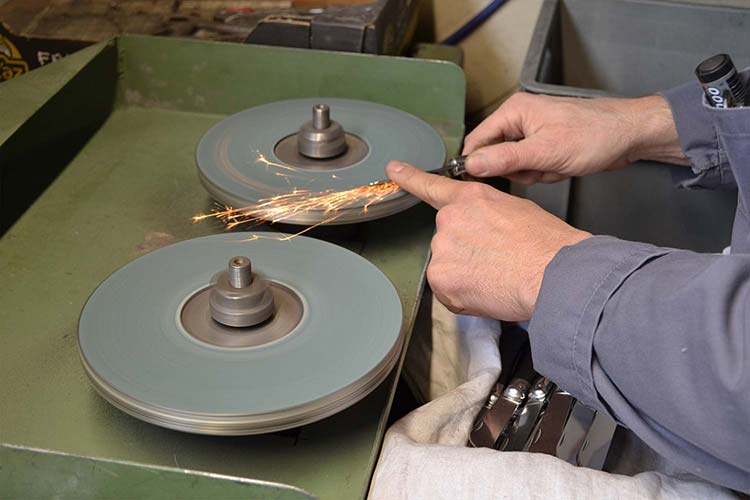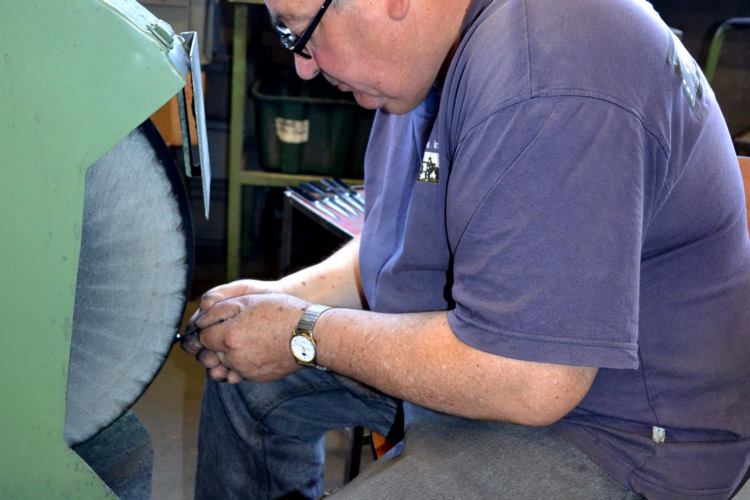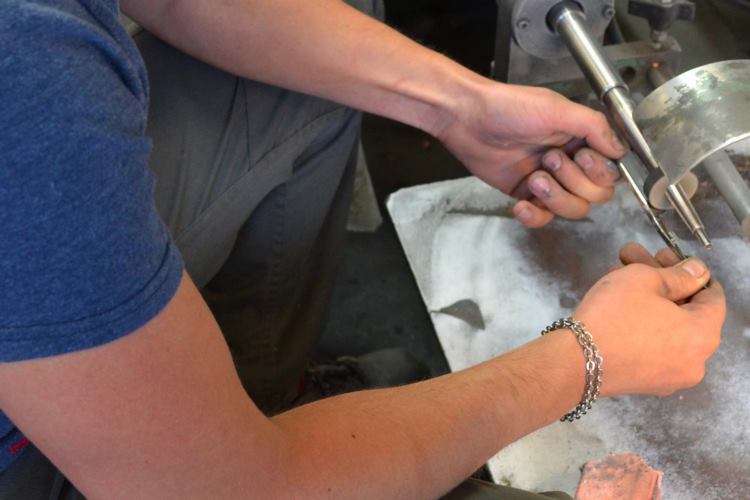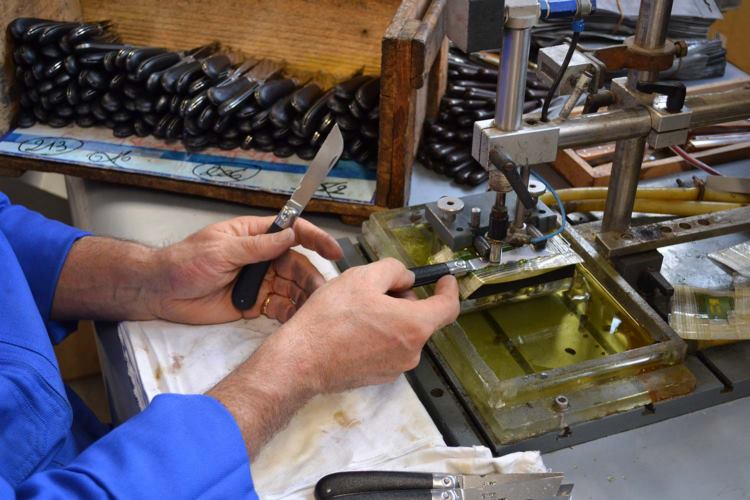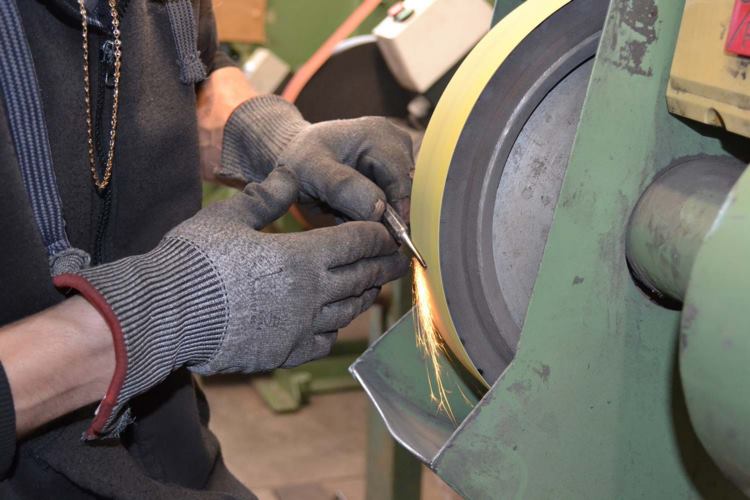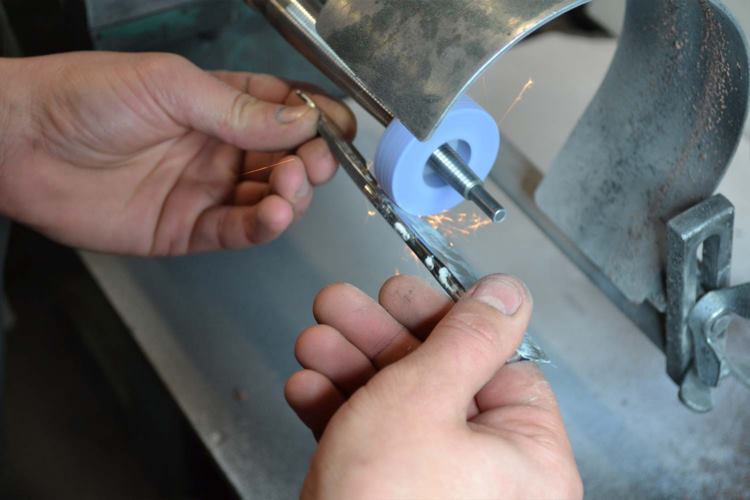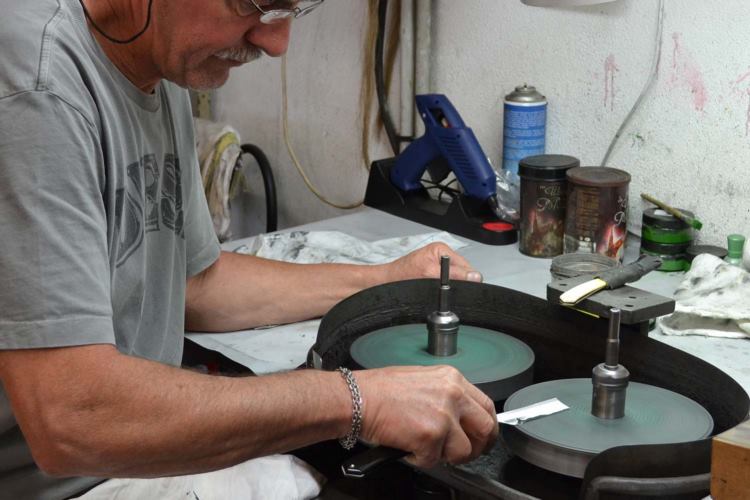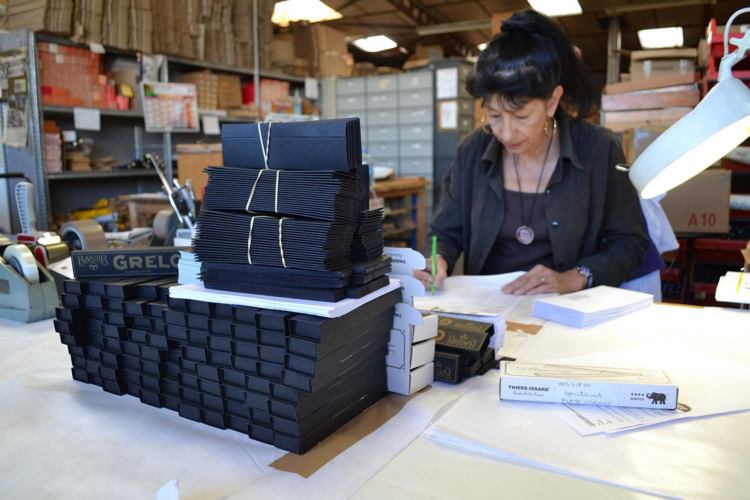Our workshops
Our workshops are organized in such a way as to facilitate the work of our operators:
Professional knives occupy the first part of the workshop, the second part of our premises being occupied by the manufacture of Pigeat Taillanderie articles, the rest of our factory being dedicated to the manufacture of hand razors and other sharp objects.
The last part of our factory is placed so as to ensure the visual and manual control of all our production.
The different stages of the manufacturing process
- Phase 1: The clamp is about 1 cm thick
- Phase 2: Crushing the blade, bolster and handle with a pestle
- Phase 3: Routing: the excess metal is removed
- Phase 4: Drafting: drilling before quenching
- Phase 5: Hot forging for 4116 SI standard steels and DNH7 carbon steels.
- Phase 6: Cold forging for 12C27 (Sandvik), Z40C13 and Z47C13 steels with molybdenum.
- Phase 7: The draft
- Phase 8: The drafts before quenching.
- Phase 9: Quenching in sodium under carpet: stainless steel at 1000°c, carbon at 800°C.
- Phase 10: Tempering in oil at 300°C for stainless steel, 250°C for carbon. The tempering sticks the molecules together and softens the metal.
- Phase 11: Sharpening (grinding): the excess metal is removed to the bolster.
- Phase 12: Draft after sharpening.
- Phase 13: MANUAL preparation with a grinding wheel to remove the mill scale on the ear, ball and chin strap.
- Phase 14: Polishing with leather rollers to cut the grinding wheel lines and cut.
- Phase 15: Helving or drilling
- Phase 16: Milling for rivet head location
- Phase 17: Riveting for black or stamina nylon handles, screwing for micarta or horn-shaped nylon handles
- Phase 18: Adjustment
- Phase 19: Sanding. It is carried out in water for micarta and horn-shaped nylon.
- Phase 20: Polishing. It is carried out in water with felt for micarta and horn-shaped nylon
- Phase 21: Polishing with ventilated cotton and polishing paste.
- Phase 22: Polishing of the blade with an abrasive.
- Phase 23: Blade control.
- Phase 24: Possible modifications.
- Phase 25: Wiping and control.
- Phase 26: Electrolytic marking.
- Phase 27: Sharpening = cutting the edge by grinding wheel, then by felt, then by cotton.

